A Sky & Telescope press release
Contacts:
Kelly Beatty, Senior Editor, Sky & Telescope
855-638-5388 x22168, [email protected]
Alan MacRobert, Senior Editor, Sky & Telescope
855-638-5388 x22151, [email protected]
| Note to Editors / Producers: This release is accompanied by publication-quality illustrations and video interviews in English and Spanish. |
One year from now — on August 21, 2017 — millions of people will be looking skyward to witness a total eclipse of the Sun. And, for the first time since 1979, this celestial spectacle will be observable from the continental United States. Anticipation of this event has already created tremendous excitement among professional astronomers and casual skywatchers alike.
A total solar eclipse occurs when the Moon passes directly between the Sun and Earth. One of these occurs somewhere on Earth about every 18 months on average. However, a total solar eclipse has not been observed from the mainland U.S. since February 26, 1979 (viewed in the Pacific Northwest), though one was seen from Hawaii on July 11, 1991. Moreover, the Moon's shadow has not crossed the U.S. coast to coast since 1918.
Eclipse Path Crosses 14 States
Unlike a lunar eclipse, which can be viewed from an entire hemisphere of Earth, the Moon's shadow traces out a very narrow path that, next year, will be 8,600 miles long but only about 70 miles wide. This narrow track of "totality" crosses 14 states: Oregon, Idaho, Montana (barely), Wyoming, Nebraska, Iowa (barely), Kansas, Missouri, Illinois, Kentucky, Tennessee, North Carolina, Georgia, and South Carolina. Cities lying wholly or partially within the total-eclipse path include Salem, Oregon; Casper, Wyoming; Kansas City, Kansas; St. Louis, Missouri; Nashville, Tennessee; and Columbia, South Carolina.
"Although the Sun is 400 times larger than the Moon, it coincidentally lies about 400 times farther away," explains Sky & Telescope Senior Editor Kelly Beatty. "So, fortunately, the lunar disk appears just large enough to cover the Sun entirely." Moving along its orbit at about 2,300 miles per hour, the Moon will take 3¼ hours to completely cross the Sun — from the first moment its silhouette begins to bite into the Sun until the last bit of it exits.
However, the duration of totality, with the Sun's disk completely covered, is much shorter. Next year totality's greatest duration, observable from a point 12 miles southeast of Carbondale, Illinois, will be 2 minutes 42 seconds. The shortest duration on the center of the eclipse path within the U.S., exactly 2 minutes long, occurs along the Oregon coast.
The maximum possible length of totality is 7½ minutes. The total solar eclipse in 1991 lasted 6 minutes 53 seconds, and the one on July 22, 2009, lasted 6 minutes 39 seconds — the longest totality of the 21st century.
After the 2017 event, the next total solar eclipse occurs on July 2, 2019, and will be observable from the South Pacific Ocean and South America. The next chance to see totality in the United States comes on April 8, 2024, along a track that runs northeast from Texas through Maine. A small region at the intersection of Missouri, Illinois, and Kentucky lies in the eclipse paths for both 2017 and 2024.
What to Expect on Eclipse Day
Few people have witnessed a total solar eclipse, yet it is the most dramatic celestial event you'll ever see. During totality, with the Sun's brilliant disk fully covered, the sky turns dark (like very deep twilight) and the brightest planets and stars become visible. Animals become quiet, birds go to roost, and the temperature drops noticeably.
Up in the sky, where the Sun had shone moments before, is a circular wreath of delicately-stranded white light. This is the corona, the Sun's tenuous atmosphere. However, unlike the air surrounding Earth, the corona consists of ionized gases at temperatures of roughly 2,000,000° Fahrenheit (more than 1,000,000° Celsius). Shining with a combination of scattered and emitted light, the corona is roughly one-millionth the brightness of the Sun itself. So it becomes apparent only during a total solar eclipse.
Because its gas is highly ionized, the corona displays long streamers and other features shaped by the Sun's powerful magnetic field. When the Sun is near maximum in its 11-year-long activity cycle, the corona tends to have a uniform, rounded appearance. But by August 2017, with solar activity declining from a historically weak maximum, the corona will likely exhibit long streamers from its equatorial regions and shorter "brushes" near its poles.
Also typically visible during totality are towering prominences, crimson-colored pillars of superheated gas that rise into the lower corona from the photosphere (the Sun's light-emitting "surface").
While several teams of professional astronomers are preparing to study the corona during next year's total solar eclipse, most amateur astronomers will be content to simply enjoy the spectacle without having to travel to some distant part of the globe to reach the path of totality.
An estimated 300 million people live within a 1- or 2-day drive of the eclipse track. "More people might see next year's solar eclipse than any other in history," notes Sky & Telescope Senior Editor Alan MacRobert. "Many hotels situated within the path of totality were fully booked years in advance. So anyone who plans to travel to see the eclipse should be making plans now."
Those unable to reach the path of totality still have something to look forward to. All of North America will experience a partial solar eclipse on August 21, 2017 — though it will be unsafe to watch by eye except through an approved solar filter. The closer to the event's centerline you are, the deeper the partial eclipse you'll see. For example, residents of San Francisco, Dallas, and Philadelphia will see 75% of the Sun's disk covered by the Moon; the areal coverage will be 87% as seen from Chicago and 92% from Denver.
Additional details regarding the 2017 event — including tips for how to view it safely and photograph it successfully — are at Sky & Telescope's dedicated section of eclipse-related resources..
Sky & Telescope is making HD videos and publication-quality illustrations available to our colleagues in the news media. Permission is granted for nonexclusive use in print and broadcast media, as long as appropriate credit (as noted in the caption) is included. Web publication must include a link to SkyandTelescope.com.
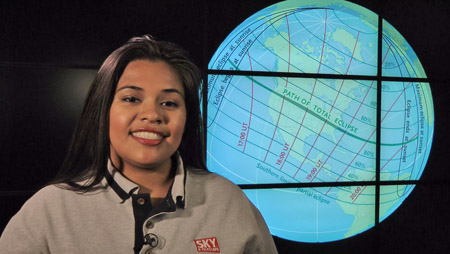
On-screen credit: Ana Aceves / Sky & Telescope
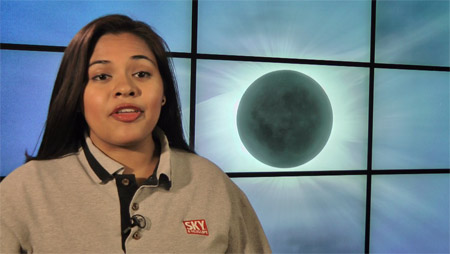
On-screen credit: Ana Aceves / Sky & Telescope
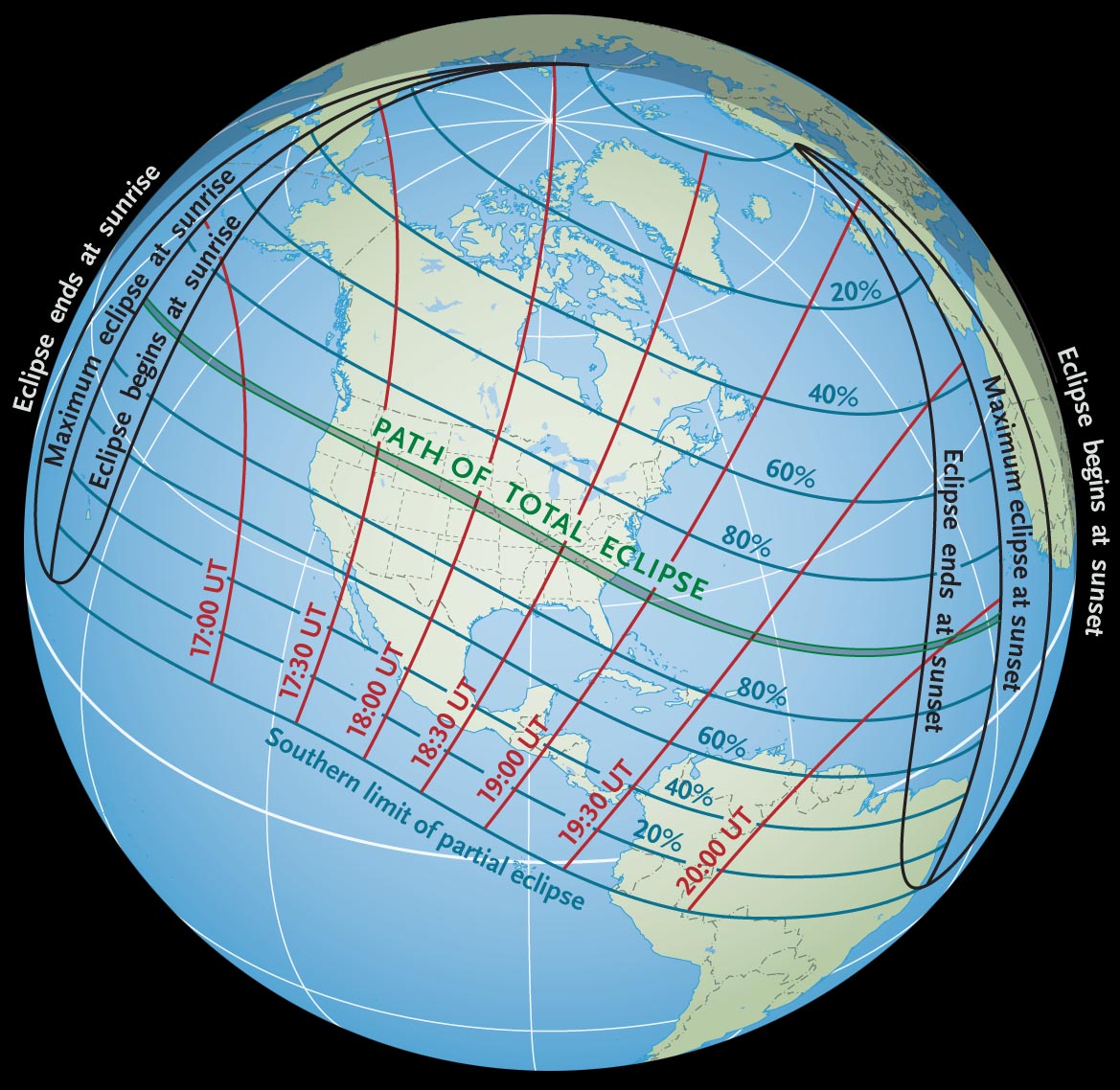
Sky & Telescope diagram / source: Fred Espenak
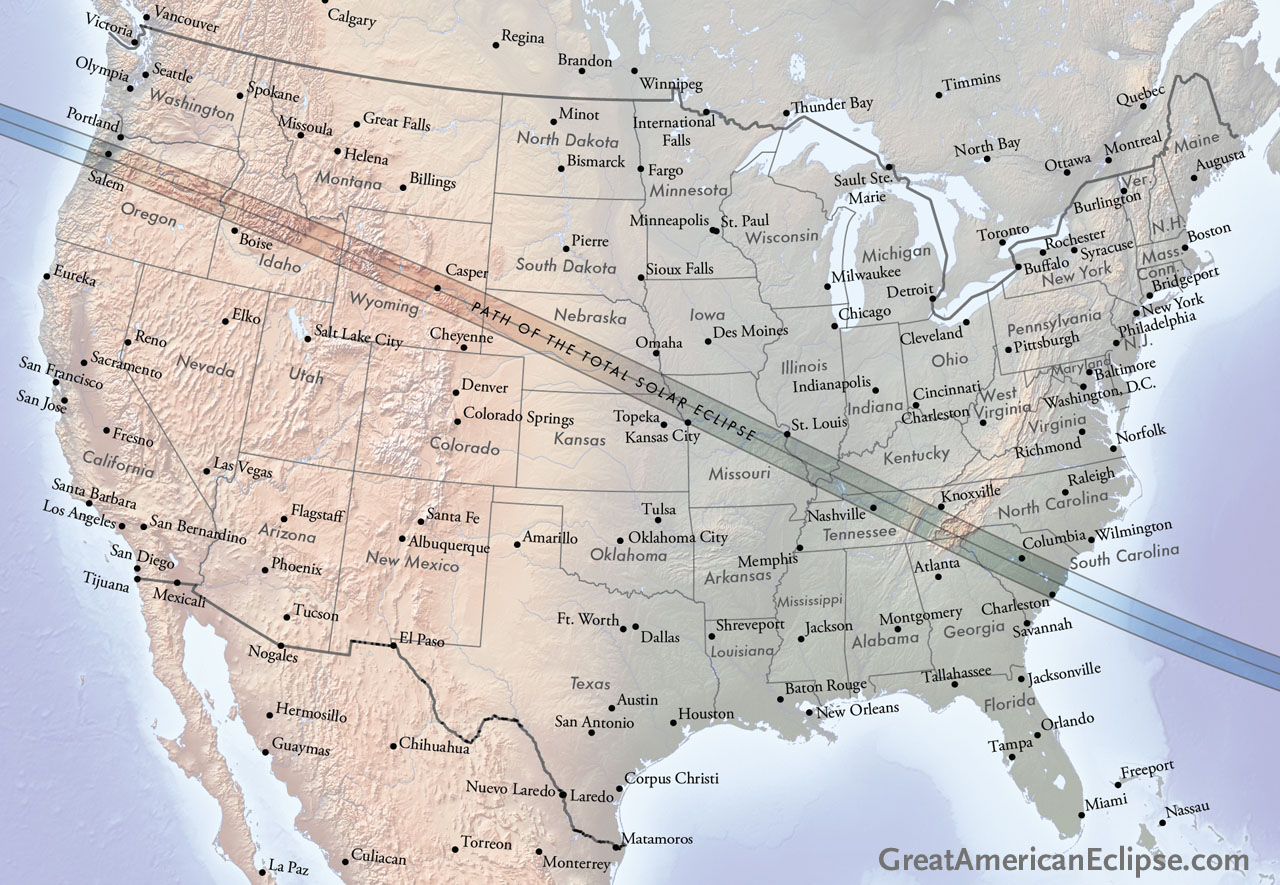
Michael Zeiler / GreatAmericanEclipse.com
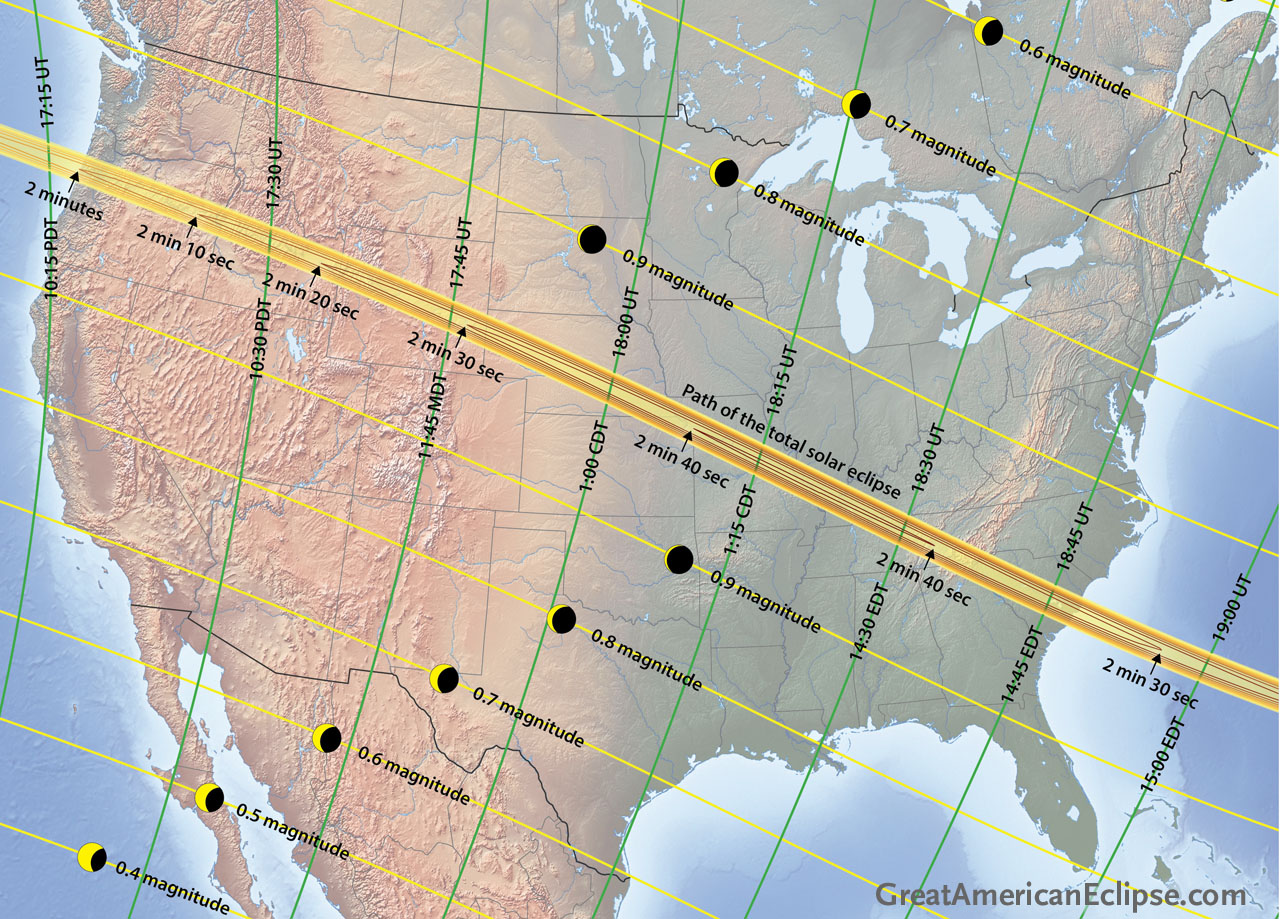
Michael Zeiler / GreatAmericanEclipse.com
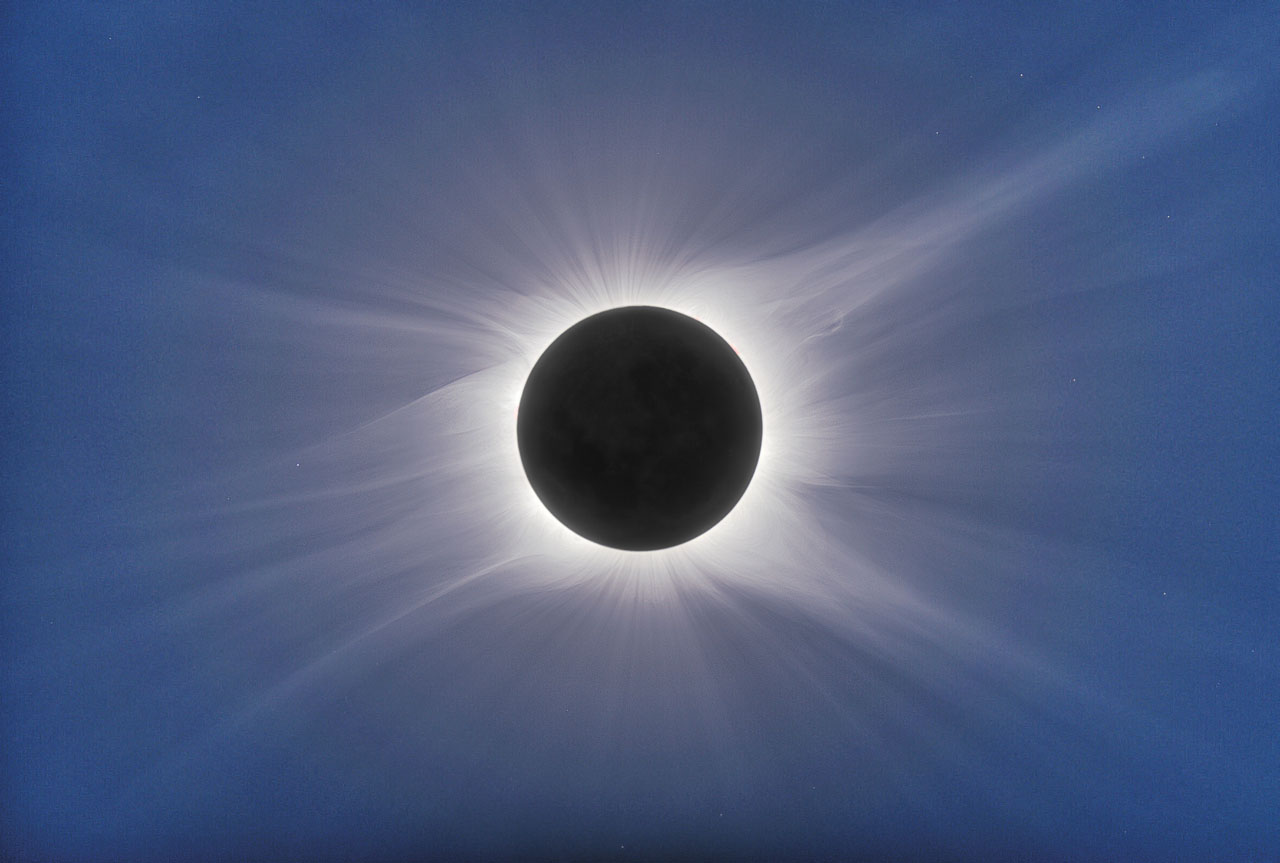
Sky & Telescope / Dennis Di Cicco
For skywatching information and astronomy news, visit SkyandTelescope.com or pick up Sky & Telescope, the essential guide to astronomy since 1941, with subscribers in more than 100 nations. Sky & Telescope and SkyandTelescope.com are divisions of F+W, a content and ecommerce company. F+W also publishes SkyWatch (an annual guide to the night sky) as well as books, star atlases, posters, prints, globes, apps, and other fine astronomy products.
 0
0